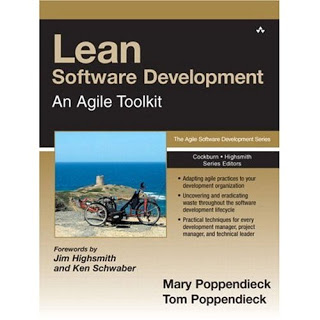
Amazon.com. What a bunch of jerks.
Amazon is frantic to maintain their (to me unfair) competitive advantage that buyers don’t have to pay sales tax in California. Because of that, Amazon’s prices are automatically cheaper than those of brick-and-mortar resellers, or online sellers that have some sort of presence in the state.
Normally you might go to Barnes and Noble store to get a book or movie, or Best Buy for electronics — and buy today and bring your purchase home today. But with the special Amazon tax-free discount, consumers comparison-shop at Best Buy, but often place the order on Amazon in order to save 9% or so.
Thus, Amazon’s desperation to do anything, anything, to maintain that sales-tax-free status whenever possible. (It already lost it in some states, such as New York, where it must collect sales tax.)
Some states are beginning to consider having associates to be the same as a corporate presence for sales-tax reasons. When a state moves in that direction, Amazon fires its associates in that state, throwing them overboard in order to remain a sales-tax-free haven. California is the latest state to move in that direction, and Amazon indeed has fired its associates.
A small non-profit that I work with has been an Amazon affiliate for some years. No more. Yesterday, the organization received the following email from Amazon, which spells the end of our small amount of income from sales referrals:
From: Amazon.com Associates Program@amazon.com>
Date: June 29, 2011 12:19:58 PM PDT
Subject: Notice of Contract Termination Due to Potential New California Law
Hello,
For well over a decade, the Amazon Associates Program has worked with thousands of California residents. Unfortunately, a potential new law that may be signed by Governor Brown compels us to terminate this program for California-based participants. It specifically imposes the collection of taxes from consumers on sales by online retailers – including but not limited to those referred by California-based marketing affiliates like you – even if those retailers have no physical presence in the state.
We oppose this bill because it is unconstitutional and counterproductive. It is supported by big-box retailers, most of which are based outside California, that seek to harm the affiliate advertising programs of their competitors. Similar legislation in other states has led to job and income losses, and little, if any, new tax revenue. We deeply regret that we must take this action.
As a result, we will terminate contracts with all California residents that are participants in the Amazon Associates Program as of the date (if any) that the California law becomes effective. We will send a follow-up notice to you confirming the termination date if the California law is enacted. In the event that the California law does not become effective before September 30, 2011, we withdraw this notice. As of the termination date, California residents will no longer receive advertising fees for sales referred to Amazon.com, Endless.com,MYHABIT.COM or SmallParts.com. Please be assured that all qualifying advertising fees earned on or before the termination date will be processed and paid in full in accordance with the regular payment schedule.
You are receiving this email because our records indicate that you are a resident of California. If you are not currently a resident of California, or if you are relocating to another state in the near future, you can manage the details of your Associates account here. And if you relocate to another state in the near future please contact us for reinstatement into the Amazon Associates Program.
To avoid confusion, we would like to clarify that this development will only impact our ability to offer the Associates Program to California residents and will not affect their ability to purchase from Amazon.com, Endless.com,MYHABIT.COM or SmallParts.com.
We have enjoyed working with you and other California-based participants in the Amazon Associates Program and, if this situation is rectified, would very much welcome the opportunity to re-open our Associates Program to California residents. We are also working on alternative ways to help California residents monetize their websites and we will be sure to contact you when these become available.
Regards,
The Amazon Associates Team
Later that day, we received the coup de grace – and although the amount of money is small, the annoyance is large. Thank you, Amazon, for nothing.
From: Amazon.com Associates Program@amazon.com>
Date: June 29, 2011 9:43:23 PM PDT
Subject: Notice of Termination due to New California Law
Hello,
Unfortunately, Governor Brown has signed into law the bill that we emailed you about earlier today. As a result of this, contracts with all California residents participating in the Amazon Associates Program are terminated effective today, June 29, 2011. Those California residents will no longer receive advertising fees for sales referred to Amazon.com, Endless.com, MYHABIT.COM orSmallParts.com. Please be assured that all qualifying advertising fees earned before today will be processed and paid in full in accordance with the regular payment schedule.
You are receiving this email because our records indicate that you are a resident of California. If you are not currently a resident of California, or if you are relocating to another state in the near future, you can manage the details of your Associates account here. And if you relocate to another state in the near future please contact us for reinstatement into the Amazon Associates Program.
To avoid confusion, we would like to clarify that this development will only impact our ability to offer the Associates Program to California residents and will not affect your ability to purchase from Amazon.com, Endless.com,MYHABIT.COM or SmallParts.com.
We have enjoyed working with you and other California-based participants in the Amazon Associates Program and, if this situation is rectified, would very much welcome the opportunity to re-open our Associates Program to California residents. As mentioned before, we are continuing to work on alternative ways to help California residents monetize their websites and we will be sure to contact you when these become available.
Regards,
The Amazon Associates Team
Z Trek Copyright (c) Alan Zeichick
 Let us spend a moment pondering the barcode. Barcodes are everywhere. Everywhere. Every time you visit a grocery store, cashiers use barcodes to ring up your purchases. That is, unless you choose the self checkout, where you scan them yourself. Airlines send barcodes to phones for paperless checking. Barcodes track warehouse inventory and adorn corporate asset tags.
Let us spend a moment pondering the barcode. Barcodes are everywhere. Everywhere. Every time you visit a grocery store, cashiers use barcodes to ring up your purchases. That is, unless you choose the self checkout, where you scan them yourself. Airlines send barcodes to phones for paperless checking. Barcodes track warehouse inventory and adorn corporate asset tags.



